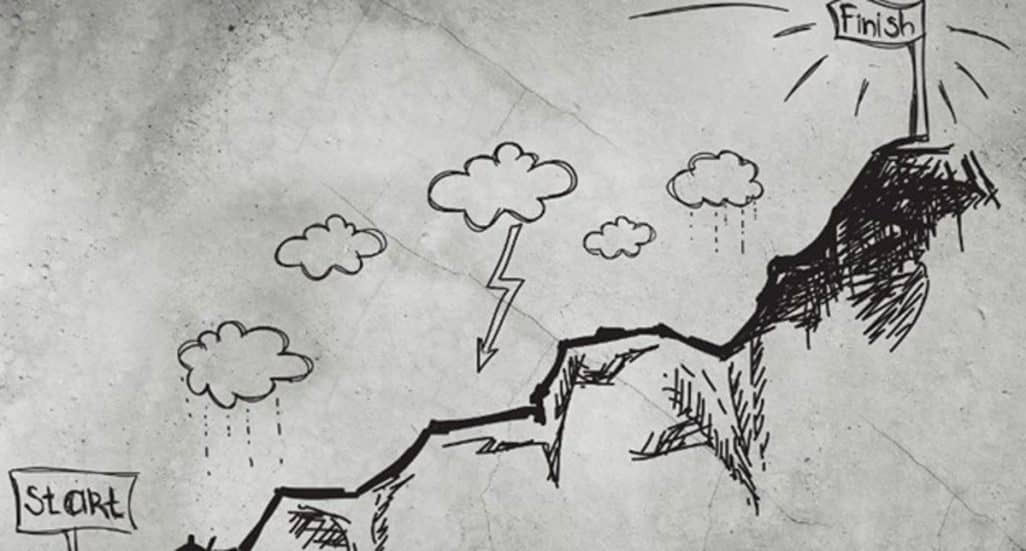The Challenges of Catalysts
Self-doubt and questioning myself. If everyone here thinks things are OK, maybe it is me? I feel like I don’t fit in. Others may see me as ‘one thing is not like the other’. When I ask questions people look at me like I’m crazy. I see a bigger story. I am connecting pieces. I quickly create goals and want forward movement. But then I question myself when I look around me. And I question if I want to be a Catalyst. Or sometimes when I have a new idea and goal I think ‘Maybe this time it isn’t going to work?!’” – A Catalyst describing challenges they face

Being catalytic can feel amazing – you have a drive that gets you out of bed, see opportunity everywhere and manifest meaningful change. And yet…
There is PAIN that comes with being catalytic.
The slow pace of change. The frustration of explaining things over and over. Not sure which idea to act on right now. Feeling rejection or self-doubt. All of these are common challenges. In fact being a Catalyst comes with a long list of challenges. Research surfaced dozens of common challenges that group into 7 categories.
(Note: There are specific challenges for Catalysts that work within large organizations that are not represented here.)
1. Picking What to Do (aka Opportunity Paralysis)
Catalysts struggle to choose where to focus as they generally have multiple ideas simultaneously. The sheer volume of ideas can cause paralysis. This challenge manifests at a broad scope where sometimes Catalysts struggle to pick one idea to invest largely in. And in a smaller scope they can find it difficult to prioritize the tasks to tackle in the moment.
Key quote:
“It is a challenge to prioritize ideas and put it all into your lifetime. ‘What is #1?’ I don’t have unlimited resources. Time and resources are limited. [To stay on track] once I start a project I need a lot of organization and guidance.”
2. Challenges of Coming to Clarity
Once an idea has been picked (or has picked the Catalyst) the early stage of coming to clarity on the vision and exactly what should be done can be both frustrating and stimulating. This time is full of problem solving, initial steps and quick iteration that can push Catalysts to a frenzied manic state.
Key quote:
“The process of getting clear on my vision and goal can be a challenge. It is like the storming phase of team development. I have a general idea and I am puzzling. I’m all over the place. I have disconnected thoughts and inputs that are swimming. I am trying to put it all together. It is uncomfortable and fun and depleting and energizing. When I finally see my ideas that others were skeptical of manifested and proliferating it is almost outside of me, it is like Aaaaah!”
The sheer volume of ideas can cause paralysis.
3. Difficulty Bringing Others Along
Catalysts feel it takes a long time to manifest change with and through others, especially if the folks around them are not Catalysts. Commonly cited is the challenge of how slooooowly people around them move. Similarly, most Catalysts struggle with getting their ideas across. This is especially true if an idea is still formulating or if it is radically different than anything else people can relate it to. This makes it tough to get people on-board with a new idea – if it is difficult to get ideas across, getting people to move into action around the idea can be even more difficult. Or if they are willing to move because they trust you, they don’t understand what steps they should take because they don’t quite grasp the end goal – so it requires the Catalyst to slowly break things into tactical pieces, which can feel like torture. And when you are quite certain that you are “right” and you know where to go but others seem resistant, impatience and frustration can leak out.
Key quote:
“Sometimes it is so hard to get other people to see what you are seeing so clearly and easily. How do I get them to understand if they do these things this will be successful when it is so obvious to me? Then having patience for it. Do I really need to educate them? I assume they’ll get there and then they aren’t getting there. I get tired of waiting and I eventually tell them ‘do these three things’. You can’t always have people around you that are going to be really quick and get it all the time.”
4. Burning Out
Catalysts are often not great at building in activities or times of quiet that can recharge and sustain. This is especially true during the clarity phase described above. Related, Catalysts are often better at focusing outside of themselves rather than taking notice of their internal state. Therefore they can work themselves too hard without having noticed until they are close to collapse emotionally and or physically.
Key quote:
“I can be so externally focused that I lose sight of what I need. I will all of a sudden realize my bucket is empty and I need to refuel.”
When you know where to go but others seem resistant, impatience and frustration can leak out.
5. Impact on Relationships or Other Interests
The periods of mania can take a serious toll on relationships and outside interests. Catalysts talk of straining their intimate relationships as well as not taking the time to maintain friendships. Similarly Catalysts can become so consumed in their manifestations that they don’t take time for other things like hobbies. When a project ends (or worse, fails) this can be discombobulating because a Catalyst who has not created a schedule of engagements may be lost as to how to spend time.
Key quotes:
“It is an all-consuming drive. People use the word passion to describe it, but I wouldn’t necessarily use that word. There is an emotional draw to whatever you are working on. That is where everything I have done has either been something that drives me mad and I need to be solving it or it is such fun and a beautiful thing to explore. It is consuming, not passion. It feels great to harness that. It can also feel really frustrating because other parts of your life don’t get time and energy.”
6. Perception and the Fall Out from Perception
Additionally Catalysts are challenged by how they can be perceived and the emotional repercussions of these perceptions. Common negative perceptions include:
- Being perceived as arrogant because they are “over confident” or they believe they are “right”.
- Being feared because they often propose change that could disrupt the status quo or even disrupt someone’s project or role.
- Being disliked because they are viewed as nay-sayers or constantly critical of how things are done.
- Being misunderstood as having malicious intentions to undermine others versus the purpose led drive to optimize and change the world for the better.
- Not having contributions perceived as valuable.
In response Catalysts report a profound sense of loneliness and isolation, some talking of loneliness from childhood. A second response is self-doubt. After hearing an idea is crazy or your way of being is wrong and disruptive over and over, some Catalysts begin to doubt a chosen path. Challenges to your way of thinking seem to pile up.
Key quote:
“Change is hard. For a lot of change to come from one place, one person – all uncertainty comes from THAT! My ideas make peers feel wrong. How do we deal with people we work with that may fear or distrust what is new and different? I threaten the status quo.”
Being a Catalyst can take a serious toll on relationships and outside interests.
7. The Challenge of Staying Interested
A final area of challenge is staying interested in a project once it has been manifested and has solid momentum. For many Catalysts their attention begins to be caught by other opportunities and ideas. Similarly executing on details or overseeing the execution of details can be a struggle akin to sticking a pencil in the eye.
Key quote:
“I struggle to stay on course. It is easy to get distracted with another idea. I need to funnel action into a course of action and stay the course. Ideally a cohesive and integrated approach.”
While there is much that is desirable about being a Catalyst, catalyticness can come at a cost that impacts relationships, as well as emotional and physical health. Throughout the research stories of how Catalysts overcome these challenges also emerged which will be shared in future posts.
Background on Catalyst Research
In November 2015, I looked at the similarities between my favorite clients. Stark similarities emerged. I didn’t have a word to describe them. Then in my very next coaching session with one of those clients he said “I realized I’m a Catalyst”. It was like lightning struck. Yes! That is what ties my favorite clients together. I had observational data from working with my clients, but I wanted to be more direct in my quest so I could better serve my ideal clients. I leaned into my background as an anthropologist and began to systematically interview people that self-identify as Catalysts. These posts are outputs from my research.
I’d love to hear your thoughts on and experience with Catalysts. If you self-identify as a Catalyst or change agent let me know what resonates!

